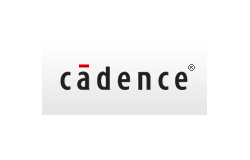Fiber Connect 2023, which will be held August 20-23, 2023, at the Gaylord Palms in Orlando, will host the following Proof-of-Concept demonstrations:
Digital 3D Georeferenced Fiber Network Roll-Out Management and Documentation - presented by DeepUp
- This PoC will showcase an augmented reality (AR) solution with which 3D documented subsurface fiber networks can be virtually recovered and digitally seen in 3D to assist fiber network planning.
Enhancing the Customer Experience and Streamlining Operations with Cloud-Based Provisioning, Billing, and Orchestration - presented by Ting Internet and Wavelo
- This PoC will demonstrate an approach to automate, orchestrate and synchronize disparate systems and processes to provision, install, bill, and manage customers more efficiently, ultimately resulting in higher customer satisfaction and lower operating costs.
Get Ready for The Next Generation of Applications by Deploying A Disruptive Broadband Architecture - presented by Ciena
- This PoC will show how service providers can rethink their network architectural approach, leveraging disaggregation and virtualization, to push network access closer to the user to deliver and scale capacity where needed.
Leveraging Fiber to Efficiently Capture Small Businesses in Your Markets - presented by Calix
- This PoC will show how Broadband Service Providers (BSP) can leverage their fiber access network, operations, and processes built around their consumer business to offer managed services purpose-built for small businesses.
Multi-Vendor Middle Mile Use Cases Enhancing PON Infrastructure via Infinera’s XR Optics Point-To-Multipoint, Automated by netFLEX® - presented by Infinera and LightRiver
- This PoC showcases a multi-vendor FTTX PON network implemented with a 400G DWDM Middle Mile point-to-multipoint solution from the router to the OLT
Enhancing Fiber Reach with Ultra-High Capacity mmW Radios at Network Edge – presented by Ceragon
- This PoC will show how to enhance fiber reach for operators, filling in where fiber may not reach…yet, allowing operators to better service customers with high-speed connectivity – even in problematic locations.
Superior Network Performance – Every Way You Slice It – presented by Nokia
- This PoC will show how operators can guarantee quality of service with complete granularity across the network from the IP core to a user appliance in the home. With this level of control, operators can use their fiber network for anything and generate new revenues with guaranteed performance for any service type.
“When fiber leads, the future follows. Our PoC Showcase is a great example of the capabilities that fiber can deliver and the markets that fiber will disrupt next,” said Gary Bolton, President and CEO of the Fiber Broadband Association. “These PoCs are an exciting representation of our members’ ability to redefine what is possible when fiber is the enabling infrastructure that allows any industry, business, or market to go further, faster.”
For more information about Fiber Connect 2023 and to register, visit fiberconnect.fiberbroadband.org

















